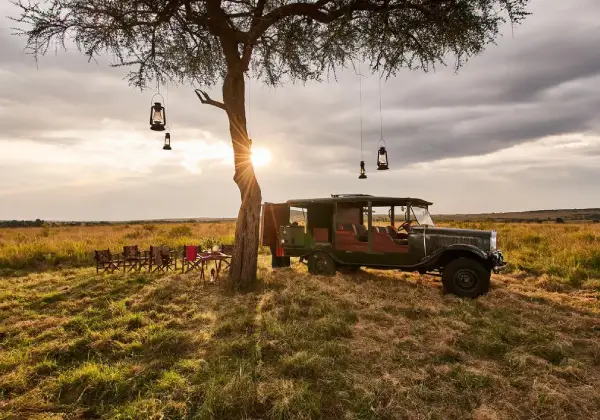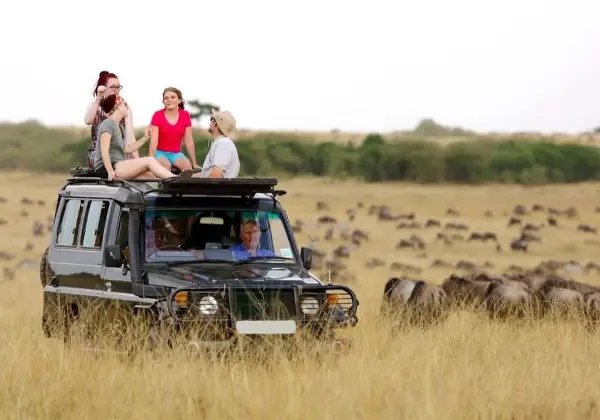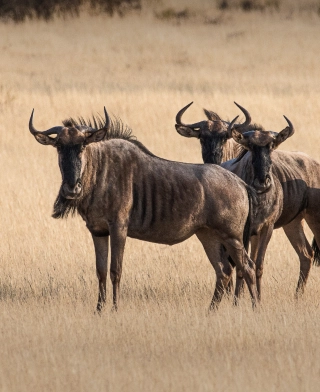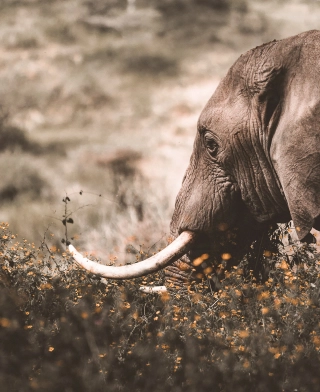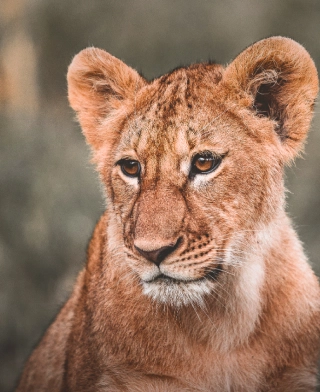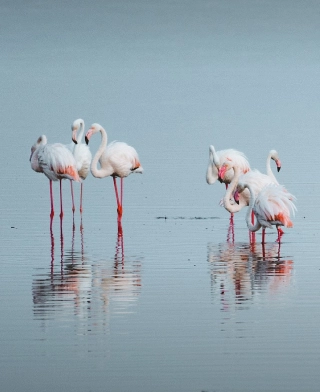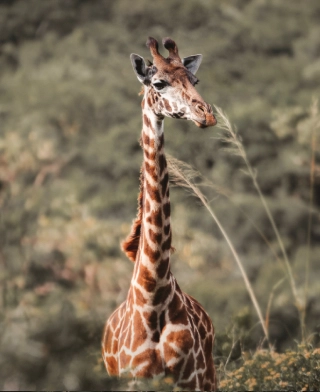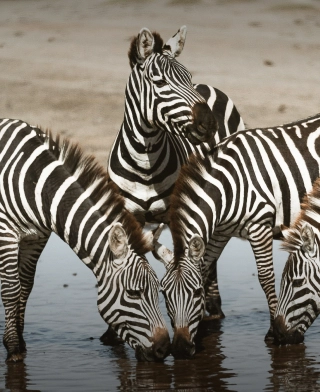Seremara Safaris
kenya safari cost
Kenya Travel Guide, Your Ultimate Resource to Exploring Kenya.
Seremara Safaris
How Much Does a Safari in Kenya Cost?
Dreaming of a safari in Kenya? The allure of vast savannas, majestic wildlife, and striking landscapes beckons adventurers from around the globe. But before you pack your bags and set off on this unforgettable journey, it’s essential to understand the costs involved. From luxurious lodges to budget-friendly camps, transport options, park entrance fees, and guided tours, a Kenyan safari can range significantly in price. This article pulls back the curtain on the financial aspects of a safari adventure, breaking down everything you need to consider to plan your dream trip without breaking the bank. Whether you’re a luxury seeker or a backpacking explorer, we’ll guide you through the various price points and help you find the perfect experience that suits your budget. Join us as we unveil the costs of a safari in Kenya, ensuring you’re well-prepared for this once-in-a-lifetime experience!
Types of Safaris: Budget, Mid-range, and Luxury
When planning a safari in Kenya, one of the first decisions you’ll need to make is what type of safari experience you’re looking for. Broadly, safaris can be categorized into three types: budget, mid-range, and luxury. Each type offers different experiences and amenities, which significantly affect the overall cost of your trip.
Budget safaris are designed for travelers who want to experience the beauty and adventure of a Kenyan safari without spending a fortune. These safaris typically involve staying in basic campsites or budget lodges, using shared vehicles for game drives, and often involve group tours. The focus is on maximizing the experience while minimizing costs, making it an excellent choice for backpackers or those on a tight budget. Despite the lower cost, budget safaris can still offer incredible wildlife viewing opportunities and memorable experiences.
Mid-range safaris strike a balance between cost and comfort. They typically include accommodations in mid-range lodges or tented camps, private or semi-private game drives, and a higher level of service compared to budget options. These safaris are ideal for travelers who want a comfortable experience without the high price tag of luxury safaris. The accommodations are often well-appointed, and you can expect better meal options, more personalized service, and sometimes even additional activities included in the package.
Luxury safaris are the epitome of safari experiences, offering top-notch service, exclusive accommodations, and often private game drives. Staying in high-end lodges or luxury tented camps, guests can expect gourmet meals, personalized itineraries, and exclusive access to certain areas of the parks. Luxury safaris come with a hefty price tag but provide a once-in-a-lifetime experience with unparalleled comfort and service. For those who seek the best of the best and are willing to pay for it, a luxury safari in Kenya is an unforgettable adventure.
Breakdown of Safari Expenses
Understanding the cost breakdown of a Kenyan safari expenses is crucial for budgeting and planning your trip effectively. The primary costs can be categorized into accommodation, transportation, park fees, meals, guides, and additional activities. Each of these components can vary widely in price, depending on the level of luxury you choose and the specific preferences you have for your safari experience.
Accommodation costs are one of the most significant expenses when planning a safari in Kenya. Depending on whether you opt for budget, mid-range, or luxury accommodations, prices can range from as low as $50 per night for basic campsites to over $1,000 per night for high-end lodges. It’s essential to research and choose accommodations that fit your budget while still providing the experience you desire. Some travelers prefer to mix different types of accommodations to balance cost and comfort.
Transportation is another critical expense to consider. This includes the cost of flights to and from Kenya, internal flights or transfers between safari destinations, and the cost of game drives. While budget safaris often use shared vehicles, mid-range and luxury safaris may offer private or semi-private transportation options. Internal flights can be expensive but save significant travel time, allowing you to make the most of your safari experience.
Park fees and permit costs are mandatory expenses that can add up quickly. Each national park and reserve in Kenya has its own entrance fees, which can range from $40 to $90 per person per day. Additionally, some parks may require special permits for certain activities, such as night game drives or walking safaris. It’s important to factor these costs into your budget and ensure you have the necessary permits in advance to avoid any surprises.
Accommodation Options and Their Impact on Cost
Accommodation is one of the key factors that influence the overall cost of your safari in Kenya. The type of accommodation you choose will not only affect your budget but also your overall safari experience. Kenya offers a wide range of accommodation options, from basic campsites to luxurious lodges, each with its own set of amenities and price points.
Budget accommodations are ideal for travelers looking to save money while still enjoying the safari experience. These include campsites, budget lodges, and basic tented camps. Campsites are the most affordable option, with prices starting as low as $10 per night if you have your own camping gear. Budget lodges and tented camps offer more comfort and amenities, such as en-suite bathrooms and dining facilities, with prices ranging from $50 to $150 per night. Despite the lower cost, budget accommodations can still provide a comfortable and enjoyable experience, especially if you’re willing to forgo some luxuries.
Mid-range accommodations strike a balance between affordability and comfort. These include mid-range lodges and tented camps, which offer better amenities and services compared to budget options. Prices for mid-range accommodations typically range from $150 to $400 per night. These lodges and camps often feature well-appointed rooms or tents, en-suite bathrooms, and on-site dining options. Some mid-range accommodations may also offer additional activities, such as guided nature walks or cultural visits, enhancing your overall safari experience.
Luxury accommodations are the most expensive but offer the highest level of comfort and service. These include luxury lodges, high-end tented camps, and exclusive private conservancies. Prices for luxury accommodations can range from $500 to over $1,000 per night. Guests can expect top-notch amenities, such as spacious suites or tents, gourmet dining, personalized service, and exclusive access to certain areas of the parks. Many luxury accommodations also offer private game drives, spa services, and additional activities, providing a truly unforgettable safari experience.
Transportation Costs: Getting Around Kenya
Transportation costs are a significant component of your safari budget and can vary widely depending on your chosen mode of travel. Getting to and around Kenya involves several expenses, including international flights, internal flights or transfers, and ground transportation for game drives and other activities.
The first major expense is your international flight to Kenya. Depending on your departure location, the cost of a round-trip flight can range from $700 to $1,500 or more. It’s advisable to book your flights well in advance to secure the best deals, especially during peak travel seasons. Additionally, consider the cost of visas and any required vaccinations, as these are essential for entry into Kenya.
Once you arrive in Kenya, you’ll need to consider internal flights or transfers between safari destinations. Internal flights are a convenient and time-saving option, especially if you’re visiting multiple parks or reserves. However, they can be quite expensive, with prices ranging from $100 to $300 per flight. Alternatively, you can opt for ground transfers, which are more affordable but can be time-consuming due to the long distances and sometimes challenging road conditions.
Ground transportation for game drives and other activities is another important cost to factor in. Budget safaris often use shared vehicles, which helps keep costs down. Mid-range and luxury safaris may offer private or semi-private vehicles, providing a more personalized experience but at a higher cost. The type of vehicle used can also impact the price, with 4×4 vehicles being more expensive than standard vans. It’s essential to choose a transportation option that fits your budget and provides the experience you’re looking for.
Park Fees and Permit Costs
Park fees and permit costs are mandatory expenses that you need to consider when planning a safari in Kenya. These fees are used to support the conservation efforts and maintenance of the national parks and reserves, ensuring that the wildlife and natural habitats are protected for future generations.
Each national park and reserve in Kenya has its own entrance fees, which are typically charged per person per day. For example, the entrance fee for the Maasai Mara National Reserve is $80 per adult per day, while the fee for Amboseli National Park is $60 per adult per day. It’s important to research the fees for the specific parks you plan to visit and factor these costs into your budget. Keep in mind that fees for children and residents of East African countries are often lower.
In addition to park entrance fees, some parks and reserves may require special permits for certain activities. For example, if you’re interested in a night game drive, walking safari, or bird watching excursion, you may need to purchase a permit in advance. These permits can range from $20 to $50 or more, depending on the activity and the park. It’s essential to check the requirements for each park and obtain the necessary permits ahead of time to avoid any disruptions to your safari plans.
Another cost to consider is the vehicle entry fee, which is charged per vehicle per day. This fee varies depending on the type of vehicle and the park, but it typically ranges from $30 to $70. If you’re traveling with a tour operator, this fee is usually included in the overall cost of your safari package. However, if you’re self-driving, you’ll need to factor this expense into your budget. By understanding the park fees and permit costs, you can better prepare for your safari and ensure you have all the necessary permits and payments in place.
Additional Expenses: Meals, Guides, and Activities
Beyond the primary costs of accommodation, transportation, and park fees, there are several additional expenses to consider when planning your safari in Kenya. These include the cost of meals, guides, and various activities that can enhance your overall experience.
Meals are an essential part of your safari experience, and the cost can vary depending on the type of accommodation you choose. Budget accommodations may offer basic meal options, such as buffet-style breakfasts and dinners, included in the room rate. However, you may need to budget for additional meals and snacks throughout the day. Mid-range and luxury accommodations often include full-board options, with gourmet meals and snacks provided as part of the package. It’s essential to check what’s included in your accommodation package and budget accordingly for any additional meals you may need.
Guides are an integral part of your safari experience, providing valuable insights and expertise on the wildlife and landscapes you’ll encounter. The cost of hiring a guide can vary depending on the level of experience and the type of safari you choose. Budget safaris may include shared guides, while mid-range and luxury safaris often offer private or semi-private guides. The cost of a guide can range from $50 to $200 per day, depending on their expertise and the level of service provided. It’s important to factor this expense into your budget and consider tipping your guide for their exceptional service.
There are also numerous activities you can participate in to enhance your safari experience, each with its associated costs. These activities can include hot air balloon rides, cultural visits to local villages, walking safaris, bird watching excursions, and more. The cost of these activities can vary widely, from $20 for a cultural visit to over $500 for a hot air balloon ride. It’s essential to research and plan for these additional activities, ensuring they fit within your budget and add value to your overall safari experience.
Tips for Budgeting Your Kenyan Safari
Budgeting for a safari in Kenya can seem daunting, but with careful planning and consideration, you can create a memorable experience without breaking the bank. Here are some tips to help you budget effectively and make the most of your safari adventure.
Firstly, it’s essential to set a realistic budget and prioritize your expenses. Determine how much you’re willing to spend on your safari and allocate funds for the primary costs, such as accommodation, transportation, park fees, and permits. Once you have a clear understanding of these expenses, you can allocate the remaining budget for additional activities, meals, and other miscellaneous costs. Prioritize the experiences that are most important to you and be willing to make compromises in other areas to stay within your budget.
Secondly, consider traveling during the low or shoulder seasons to take advantage of lower prices and special deals. The peak season for safaris in Kenya is during the dry months of June to October and December to February when wildlife viewing is at its best. However, traveling during the low season (March to May) or shoulder seasons (November and early December) can offer significant savings on accommodation, flights, and park fees. Additionally, you’ll encounter fewer tourists, allowing for a more intimate and relaxed safari experience.
Lastly, be flexible with your travel plans and consider alternative options to save money. For example, instead of staying in luxury lodges throughout your trip, you can mix and match different types of accommodations to balance cost and comfort. Opt for shared transportation or group tours instead of private vehicles to reduce transportation costs. Look for package deals that include multiple parks and activities, as these can often provide better value for money. By being flexible and open to alternative options, you can create a budget-friendly safari experience without compromising on the adventure and excitement.
Seasonal Price Variations: When to Go for the Best Deals
The cost of a safari in Kenya can vary significantly depending on the time of year you choose to travel. Understanding the seasonal price variations can help you plan your trip for the best deals and ensure you get the most value for your money.
The peak season for safaris in Kenya is during the dry months of June to October and December to February. During these months, wildlife viewing is at its best, as animals gather around water sources, making them easier to spot. However, this is also the most expensive time to travel, with higher prices for accommodation, flights, and park fees. If you’re willing to pay a premium for optimal wildlife viewing, the peak season is the best time to visit.
The low season, which runs from March to May, offers significant savings on safari costs. This period coincides with the long rainy season in Kenya, which can make some roads and parks difficult to access. However, the rains also bring lush landscapes and fewer tourists, creating a more intimate safari experience. Many lodges and camps offer discounted rates during the low season, and you can often find special deals on flights and park fees. If you’re prepared for the possibility of rain and want to take advantage of lower prices, the low season can be a great time to visit.
The shoulder seasons, which include November and early December, offer a balance between good wildlife viewing and more affordable prices. During these months, the weather is generally dry, and the parks are less crowded compared to the peak season. Accommodation, flights, and park fees are often more reasonably priced, and you can still enjoy excellent wildlife sightings. Traveling during the shoulder seasons can provide a great balance of cost and experience, making it an ideal time for budget-conscious travelers.Breakdown of Safari Expenses
Transportation Costs: Getting Around Kenya
Planning a safari in Kenya can be a daunting task, especially when considering the various costs involved. However, with careful planning and a clear understanding of the different expenses, you can create a memorable safari experience without breaking the bank. By choosing the right type of safari, budgeting effectively, and taking advantage of seasonal price variations, you can enjoy the adventure and excitement of a Kenyan safari while staying within your budget.
Whether you opt for a budget, mid-range, or luxury safari, the key is to prioritize the experiences that are most important to you and be willing to make compromises in other areas. Consider mixing different types of accommodations, opting for shared transportation, and looking for package deals to maximize your savings. Additionally, traveling during the low or shoulder seasons can offer significant savings and a more intimate safari experience.
Ultimately, a safari in Kenya is a once-in-a-lifetime experience that offers the opportunity to witness majestic wildlife, stunning landscapes, and rich cultural heritage. By understanding the costs involved and planning accordingly, you can ensure that your dream safari becomes a reality without straining your finances. Embrace the adventure, immerse yourself in the beauty of Kenya, and create unforgettable memories that will last a lifetime.
At Seremara Safaris, we offer a range of Kenya Safari Packages to accommodate different budgets. Our detailed itineraries outline what’s included in each package, ensuring there are no hidden costs. We work with you to tailor your safari experience to your preferences, providing you with exceptional value and memories to last a lifetime.
